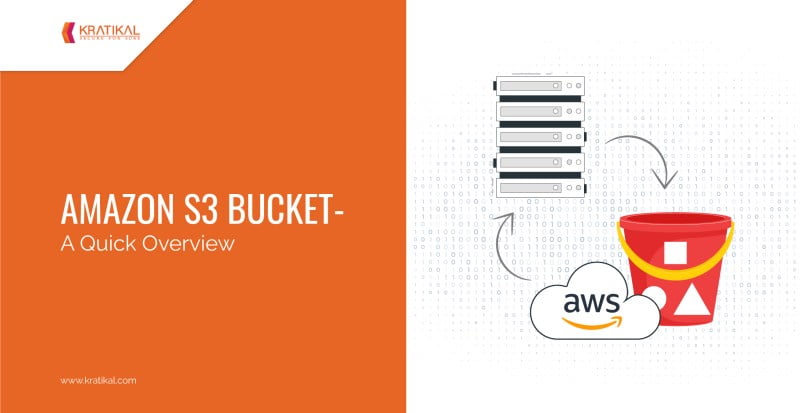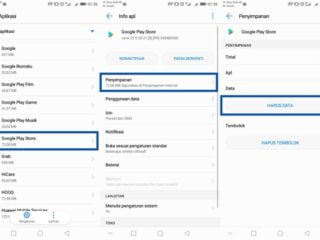S3 Amazon

S3 Amazon – Cloud Performance Architecture & Migration for Business Gaming Smart Business Networking Partner News Cloud Business Cloud Management Financial Computer Container Database Desktop & Application Streaming Developer Tools DevOps Front-end Web & Mobile HPC
Industrial Integration and Automation Internet of Things Machine Learning Media Messaging and Targeting Microsoft .NET Services for Networking and Content Delivery Open Source Public Sector Quantum Computing Robotics SAP Security Structural Computing Artificial Intelligence Professional Qualifications and Certifications
S3 Amazon

Running programs use events to initiate successful steps in a process. For example, image processing may begin after the upload process is complete. It allows developers to build complex structures using the theory
Amazon S3 Fundamentals
, Decentralization is good for most projects because it allows each part to do its job independently, which improves efficiency. Examples of e-commerce order processing, image processing, and other long-running batch tasks.
Amazon Flexible Storage (S3) is an object-oriented solution from Amazon Web Services () that allows you to store and retrieve any amount of data at any scale. Amazon S3 event notifications provide a way for users to trigger events when certain activities occur in an S3 bucket.
In this blog post, we’ll explain how you can use Amazon S3 event notifications with Amazon’s core messaging service. This will allow you to implement an event architecture for a variety of common uses.
Let’s first understand the types of events that can be generated with Amazon S3 Event Notification. Events can be caused by something being loaded, edited, deleted, or other actions. When an object is sent, a payload containing the event’s metadata is created. Contains information about what started the event itself.
An Introduction To Amazon S3
To enable notifications, you must first add a notification configuration that identifies the content you want Amazon S3 to publish. Specify the locations to which you want Amazon S3 to send notifications. This is stored in the form
Event notifications can be generated whenever an item is uploaded, edited, or deleted based on your configuration information. You can create multiple notification sets for different situations, as shown in Figure 2. For example, one set might contain new features or modifications, and another set might contain deletions. You can specify that events will fire only when objects have a specific prefix or after an object is returned. For a complete list of all configuration options and event types, read the supported event types documentation.
When all the conditions in your system are met, a new event will be started and sent to the destination you specified. The destination of the S3 event can be a Lambda function, an Amazon Simple Queue Service (SQS) queue, or an Amazon Simple Notification Service (SNS) instance, see Figure 3.

There are several common designs for building event handlers with Amazon S3 event notifications. After configuring your notification settings, the next step is to consume the event. Below are some common architectures you can consider based on your application needs.
Amazon S3 Integration: Amazon Simple Storage Service
A common use case for event management is when synchronized and secure data is required. For example, a mobile application processes images uploaded by users and automatically tags images with features discovered using human intelligence/machine learning (AI/ML). Architecturally (Figure 4), an image is uploaded to the S3 bucket, which triggers the event notification. This calls a lambda function that sends the details of the uploaded image to Amazon Recognizer for tagging. The results of Amazon Rekognition can be further processed by Lambda functions and stored in a database such as Amazon DynamoDB.
With this type of architecture, there is no way to handle multiple images coming into the S3 bucket at the same time. If this application sends too many requests to Lambda, objects can start to accumulate. This may cause some images to fail to process. To make our program more fault-tolerant, adding an Amazon SQS queue will help, as shown in Figure 5.
Architectures that require data processing in an asynchronous manner can use this system. Taking the first example, a mobile application can provide a solution to allow end users to upload thousands of images simultaneously. You can use Lambda to send images to Amazon Discovery for tagging.
Lambda functions can fetch tasks from an SQS queue at their own pace, providing a line-based asynchronous solution. This allows the processing process to be controlled by sequential processing of files without the risk of overloading. This is especially useful if the application needs to handle incomplete or fragmented events when the connection is temporarily lost.
Curso: Amazon S3 (aws Simple Storage Service)
Amazon S3 event notifications currently only work with standard SQS queues, and SQS first-in, first-out (FIFO) queues are not supported. Read more about how to configure an S3 event notification with an SQS queue as the destination. In this architecture, your lambda function must be configured to handle messages coming from SQS. This is because it will look slightly different than the actual event data body generated by S3.
SNS is combined with SQS to create a “fan out” architecture where a single event is propagated to multiple locations in parallel. Configure your S3 event notification to use an SNS topic as a destination, as shown in Figure 6. You can then direct multiple sequential steps to work on the same object. This is especially useful if you want to work on the same object in S3 in parallel.
For example, if you want to process the source image at multiple target resolutions, you can create a lambda function. The project will use a “fan-out” process to process all images simultaneously at each resolution. You can then subscribe to the SQS line for your SNS topics. This ensures that event notifications sent to SNS are fully validated by SQS after being processed by the Lambda function.

To further extend the snapshot management use case, you can create multiple SNS topics to manage multiple events from a single S3 bucket. As shown in Figure 7, this architecture will allow your program to handle creation and updating differently than deletion. You can also manage different images based on their S3 prefix.
How To Upload File To S3 With The Aws Cli
Configure your Lambda code to handle messages that are routed through SNS and SQS. Payouts will be slightly different than actual payouts for S3 event notifications.
(A2P) communication (see Figure 8). Amazon SNS can send SMS text messages to mobile clients in over 100 countries. It can also send push notifications via SMTP to Android and Apple devices and email. Using A2P, uploading an image to an Amazon S3 bucket can trigger a notification to a group of users via the selected Amazon SNS A2P platform.
In this blog post, we show you a basic design pattern for developing a cloud-managed architecture using Amazon S3 event notifications. You can create more complex architectures to suit your needs. Using Amazon SQS, Amazon SNS, and Lambda, you can build a working application that is fault-tolerant, scalable, and intelligently isolated. But don’t stop there! Consider developing your program using lambda parameters. Or combine parallel image processing with premium A2P notifications that will alert your users when a task is complete. If you use an Amazon S3 bucket to share files, you must first define those files. If not, your users will receive an access error when they try to access the URL. Here’s how to fix it.
If you’re using an Amazon S3 bucket to share files with someone, you must share those files first.
Best Amazon S3 Alternatives In 2022
Maybe you’re sending a download link, trying to share an image with a client, or maybe you’re using S3 for long files or as a content delivery network (CDN) for your website.
But if you don’t make the files public, your users will get an error message in XML Access that the file doesn’t exist.
It’s easy to make an S3 bucket public, but not necessarily how to do it. It was also changed to the old method (This post showed the old method, but I’ve updated it below with the new method.)

Here I focus on making the entire bucket and all its contents public. So before you make any changes, please make sure you don’t have any files you don’t want everyone on the internet to have access to. It is possible to make individual files (or objects) public on a file-by-file basis; I will close this further down the page.
Ingest Data Into The Cloud
But for situations where you don’t want to mess with permissions on a per-file basis—say, if you’re sharing full-frame images with clients or as a storage source for your website’s CDN using S3 buckets—then you can do . all buckets public again. This includes all existing content and any new content









No Comments